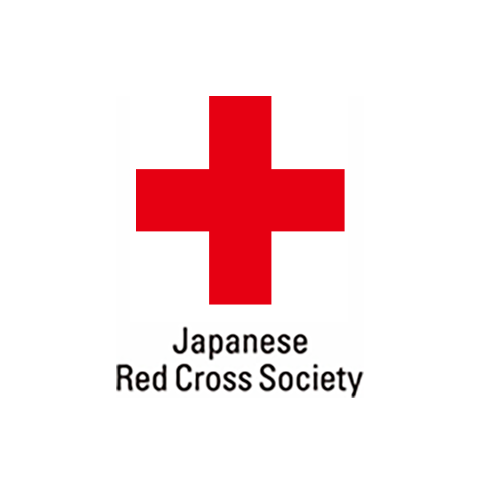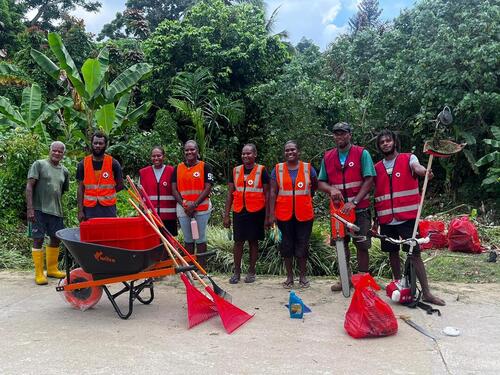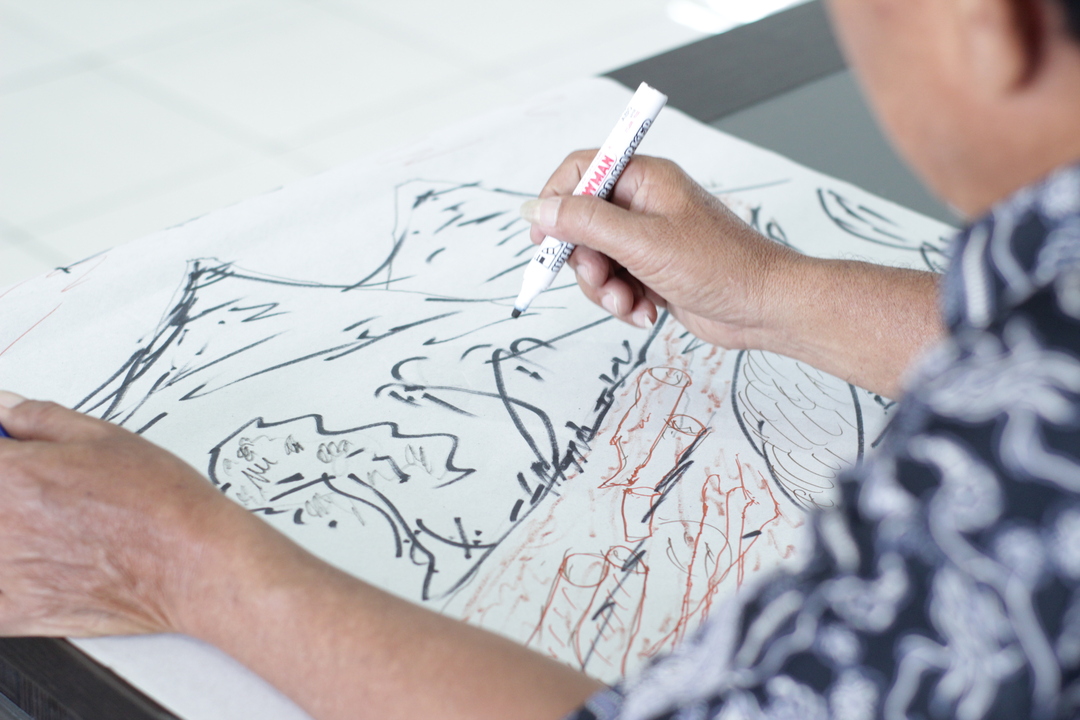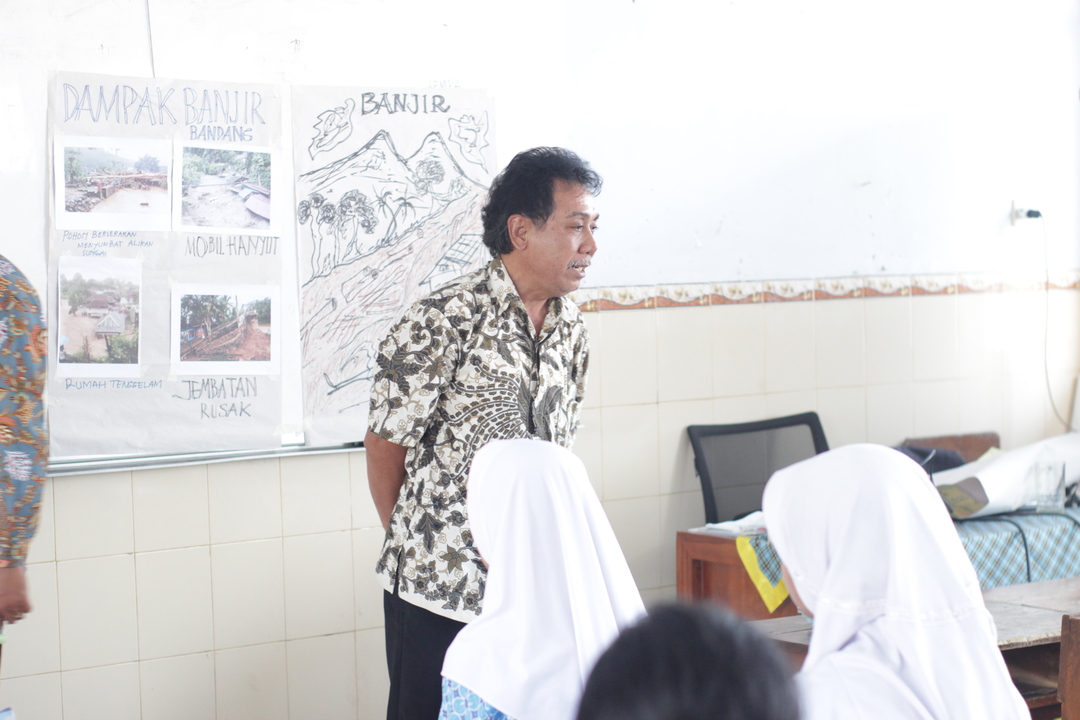Review of International Activities in FY 2023 - No.2 -
The series reviewing our international activities will be published in four parts for the FY 2023 (from April 2023 to March 2024).
No.1: Dissemination of humanitarian value
No.2: Development cooperation
No.3: International relief
No.4: Human Resources in the Field - deployment, training and managing security
No.2: Development cooperation
As climate change progresses on a global scale, the damage caused by natural disasters and pandemics have become ever more serious. In order to prepare for these threats, it is essential to "enhance the resilience of local communities to respond to and recover from crises on their own."
For this reason, the Japanese Red Cross Society (JRCS) has selected the Asia-Pacific region (the region most affected by natural disasters in the world) and the African region (a region which potentially has a huge health/medical aid needs) as priority areas for support. Through the development projects we will provide financial/technical support to local Red Cross Societies in disaster prevention and mitigation, climate change adaptation, and disease prevention.
In addition, the JRCS signed the "Climate and Environment Charter for Humanitarian Organizations" in 2022. This has accelerated our efforts through actions such as the establishment of an internal climate change policy.
Special Feature 1: Nepal Disaster Prevention Enhancement Project
On April 25, 2015, an earthquake of magnitude 7.8 struck Nepal killing approximately 9,000 people and affecting approximately 5.6 million people (about 20% of the population) due to the collapse of buildings and avalanches. The JRCS dispatched medical doctors, nurses, and other relief workers to the affected areas to provide relief services, such as mobile medical examinations, and mental health and psycho-social assistance. In cooperation with the Nepal Red Cross Society (NRCS), it engaged in recovery and rehabilitation assistance, including the reconstruction of collapsed houses and clinics, livelihood support, and so on for the victims.
In the wake of this massive earthquake, there was a clear need to strengthen preparedness for future disasters in Nepal. In January 2021, the NRCS started a community-led disaster preparedness project in cooperation with the JRCS. Under this project, 14 Community Disaster Management Committees (CDMC), consisting of local volunteers, were formed in remote villages. Led by members of the CDMCs, villagers discussed and made disaster risk maps, held first aid training sessions, and worked on mitigation measures, such as maintaining levees and drainage ditches.

Villagers creating Disaster Risk Maps © Japanese Red Cross Society
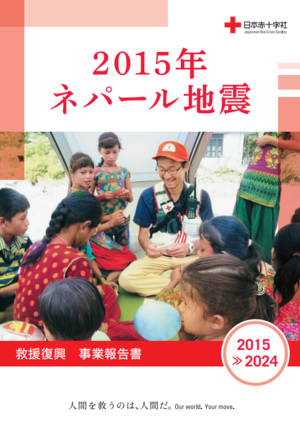
From relief to recovery compiled into a report
Nine years of disaster relief, recovery and development activities, with voluntary donation of 2 billion Japanese yen (about USD 13 million) for Nepal earthquake response, have been completed by March 2024. The achievements of the projects will be taken over by the people of Nepal for building "resilient communities against disasters."
Special Feature 2: Pacific Climate Action Project
Contrary to the image of a tropical paradise, the pacific region is one of the most vulnerable areas in the world in terms of disaster risk and response. In spite of frequent cyclones, tsunamis, earthquakes, and droughts, there exists limited access to logistics and communications that connect the myriad islands throughout the region.
In recent years, the consequences of climate change have become more serious. The effects of rising sea levels, coastal erosion, the progress of ocean acidification, droughts, and more severe and frequent cyclones have impacted the livelihoods of those who engage in fishing and agriculture.
To protect the present and future of people who are directly affected by the climate change, we launched a three-year climate change countermeasure project in April 2023, which targets 11 countries in the Pacific region. The project focuses on empowering local residents by leveraging the enthusiasm and ideas of younger generations in fostering the sustainable societies that will not suffer from climate change in the future.
Vanuatu Red Cross Santo Island youth volunteers (Ditch cleanup activities) © Japanese Red Cross Society
"Climate Change Training for Youth," which is a so-called "Y-Adapt" for facilitators were held in 2023. The program aims to deepen understanding of the knowledge required for actions of mitigation and adaptation in the event of natural disasters. The trained facilitators will conduct Y-Adapt training for youth volunteers in each country. The youth who receive the training will plan climate change adaptation measures that can be implemented in their own communities. Youth-led climate change action has begun. Activities include: Constructing drainage ditches to reduce damage from flooding and inundation of homes; Coastal clean-ups to reduce sanitary and health damage caused by marine debris; Addressing water shortages caused by drought; and Installing water harvesting systems (Click here for a report from local staff).
Empowering Vulnerable Communities Towards Their Resilience in Rwanda Project
While Rwanda has achieved rapid economic development since the end of the civil war in the 1990s, rural areas (where 80% of the population lives) face complex social issues such as poverty, lack of safe water and sanitation, infectious diseases, and natural disasters caused by climate change.
Since 2019, a resilience strengthening project has been implemented in the Gisagara District in southern Rwanda. By using the "Model Village Approach" traditionally adopted by the Rwanda Red Cross Society, local residents have taken the lead in tackling various local issues, such as disasters and poverty. Currently, they are carrying out activities in four areas in response to the needs of the region: Water and sanitation environment improvement; Environmental and greening measures; Livelihood support; and Sustainability enhancement.
In FY 2023, the fifth year of the project, water supply work was carried out with the aim of providing safe water to the communities. This is the biggest issue in the region (Click here for a report from a local staff).
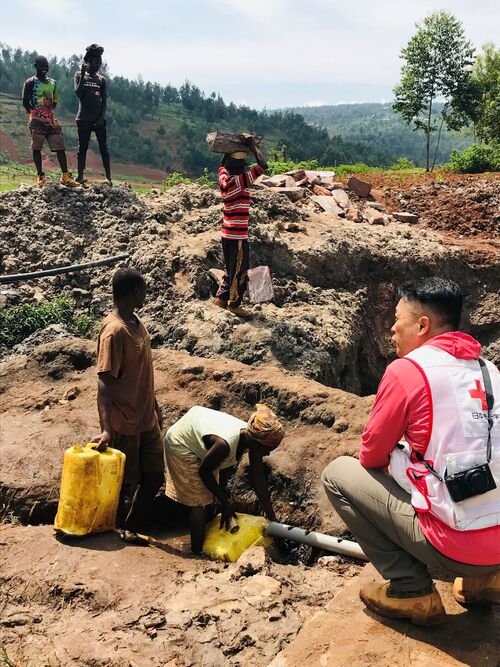 Villagers filling water at water sources © Japanese Red Cross Society
Villagers filling water at water sources © Japanese Red Cross Society
90% of the entire construction has been completed, including laying pipes from the water sources to the communities, preparing the water supply station, and installing pumps for the water collection tank. The communities will soon have access to the water, which will dramatically improve the quality of life, since children will no longer have to fetch water before going to school, and women will have more free time to engage in economic activities.
Afghanistan Climate Change Response Project
Afghanistan's economic and social infrastructure has been devastated by conflicts and civil strife that have been ongoing since the 1970s. The impact of the political upheaval in 2021 combined with the spread of the new coronavirus infection has left people facing an unprecedented humanitarian crisis. Prolonged droughts have depleted the farmland and livestock, on which 80% of the population depend for their livelihoods, forcing them to leave their homes.
In Afghanistan, JRCS has been implementing a five-year project based on the two pillars of livelihood support and disaster preparedness/mitigation. 2023 was the year when livelihood support activities, which had been gradually progressing due to the coronavirus pandemic, were fully launched. JRCS conducted vocational training and greening activities by planting cash crops, and started providing small loans to help the participants run their own businesses (Click here for a report by a staff member who traveled to the field).

Local people taking job training © Japanese Red Cross Society
In October 2023, a large-scale earthquake struck Herat Province, one of our project sites, resulting in 1,480 deaths and catastrophic damage, including the collapse of many buildings. The project’s "Voluntary Disaster Prevention Organization" played an active role in assessing the damage and providing first aid during this time of crisis. As of March 2024, support from the International Societies continues to the project sites, which are still in the process of reconstruction (2023 Afghanistan Earthquake Response).
Community and School Based Disaster Emergency Preparedness Project in Indonesia
Although Indonesia is a disaster-prone country, the development of disaster prevention infrastructure such as levees and tsunami towers has not kept pace. In 2020, the JRCS started a Community and School Based Disaster Emergency Preparedness Project in the southern part of Java, where the possibility of a major earthquake is particularly high, that focuses on schools and villages with the aim of creating a disaster-resistant region. It ended in December of last year.
In the project targeted villages, the Indonesian Red Cross Society has supported the organization and training of "Community Based Action Team," which is their framework of volunteer group. Efforts have been stepped up to help local residents to prepare for disasters and protect themselves and their families in the event of an emergency. In FY 2023 we conducted various training courses such as water rescue training, disaster early warning training, and home visits to raise awareness. Since the project area is often hit by disasters, such as floods, landslides, and volcanic eruptions, the trained volunteers serve as reliable members of the villages who are able to respond to disasters by utilizing the knowledge, materials and equipment that they have acquired.
Handmade materials for disaster prevention lessons © Japanese Red Cross Society
A lesson on disaster prevention © Japanese Red Cross Society
In addition, school officials have been working to prepare for the implementation of disaster risk reduction classes at targeted schools. After a series of meetings with stakeholders on how to implement disaster risk reduction classes that were not included in the original educational curriculum, the "Disaster Risk Reduction Education Guidelines" were completed in FY 2023 and distributed to school teachers. Furthermore, we held Teacher Training to support teachers to conduct disaster risk reduction classes smoothly in accordance with the guideline. As a result of these efforts, trained teachers are now able to conduct disaster risk reduction classes that are designed to engage the interest of students and allow them to deepen their understanding of the mechanisms of disasters, safety zones and appropriate evacuation actions (Click here for a report by a staff member who traveled to the field).
Partnership Project
In order to achieve the "Sustainable Development Goals (SDGs)" which were adopted in 2015, it has become even more important to act together with governments, international organizations, private sectors, and civil society organizations in the most collaborative manner. The JRCS carried out the development cooperation projects by making the most use of the strengths and resources of various companies and organizations in order to fulfill the humanitarian needs of the most vulnerable around the world.
The "Thank You, Sankyu (Maternity Leave) Project," which promotes infectious disease prevention and HIV/AIDS orphans in Africa, has been implemented since 2013 with the support of partner companies such as Sumitomo Corporation and SCSK Corporation. Also, Timco Co., Ltd has donated 79 jackets to support the activities of volunteers of the Rwanda Red Cross Society.

Monitoring of the Thank You, Sankyu (Maternity Leave) Project © Japanese Red Cross Society
Every year, as part of the "Onward Green Campaign," Onward Kashiyama Co. Ltd. makes blankets from recycled clothing collected from its customers and donated them to the JRCS. In 2023, a total of 4,000 blankets were donated and they were distributed to the children and families suffering from poverty in the mountainous areas of northern Laos. The blankets are not only used as bedding but also as floor mats and gowns to protect their health (Click here for a report by a staff member who traveled to the field).
